Objective of Mastermind
The objective of Mastermind is to figure out your code in less turns than your opponent.
Setup for Mastermind
- Choose which player will start as the Codebreaker and Codemaker. These roles will reverse in the second game.
- Separate the Code Pegs (larger pegs) from the Key Pegs.
- Place the board between the two players. It should be placed where the Codemaker is the only player to see the hidden code area of the board.
- Choose how many rounds will be played. Each player will be the Codebreaker and Codemaker the same number of turns.
Creating the Code
To begin each round the Codemaker has to create a code. The code will consist of four colors placed in a specific order.
The Codemaker can make pretty much any code that they want to make. They must fill in all four of the holes with a Code Peg though. You can use a different color for each space, or you can use the same color multiple times.
The Codemaker should not show or give any hints about the code that they created to their opponent.
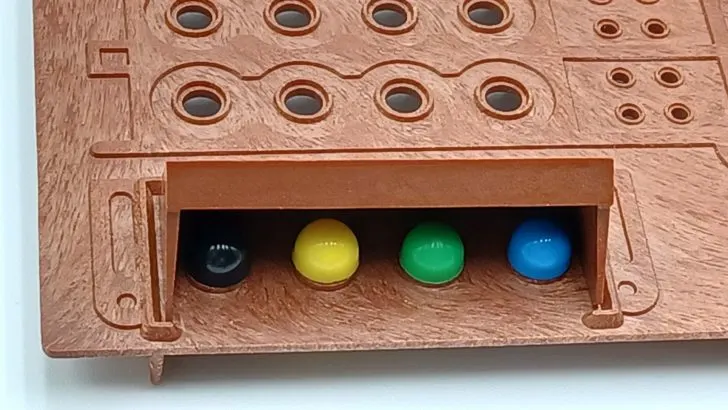
Cracking the Code
After the code has been created, it is time for the Codebreaker to try and figure itout.
The Codebreaker starts with the first row on their side of the gameboard. They will choose four Code Pegs to place in the holes of the first row. They can choose different colors for each hole, or they can use multiple Code Pegs of the same color.
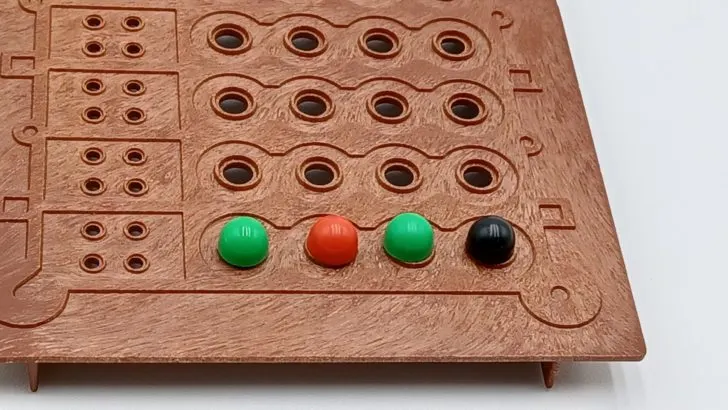
Once the Codebreaker has created their code, the Codemaker will compare it to the code they created. They will place Key Pegs next to the row to indicate correct colors and whether they were placed in the right spots. For more details see the Analyzing A Guess section below.
If the Codebreaker’s guess is not completely correct, the Codebreaker makes another guess in the next row.
Analyzing A Guess
When the Codemaker looks at the Codebreaker’s guess, they will be looking at two different things.
- The color of the Code Pegs used in the guess.
- The order of the Code Pegs used in the guess.
The Codemaker will place Key Pegs next to each row to give the Codebreaker an indication of how close they are to guessing the full code.
If the Codebreaker placed the right colored Code Peg in the exact same space as the code, the Codemaker will place a black Key Peg next to the row. In some versions of Mastermind you will use red Key Pegs instead of black pegs. It doesn’t matter which of the four holes that you place the Key Peg in. This Key Peg lets the Codebreaker know that one of the Code Pegs they placed are in the right spot.
If the Codebreaker picked the right colored Code Peg but placed it in the wrong spot, the Codemaker places a white Key Peg next to the row. The Codebreaker has to figure out which Code Peg it refers to and move that color to a different spot in the code.
Should one of the Code Pegs in the guess not be present in the code at all, leave one of the holes to the side of the row empty. This lets the Codebreaker know that one of their Code Pegs is not in the code at all.
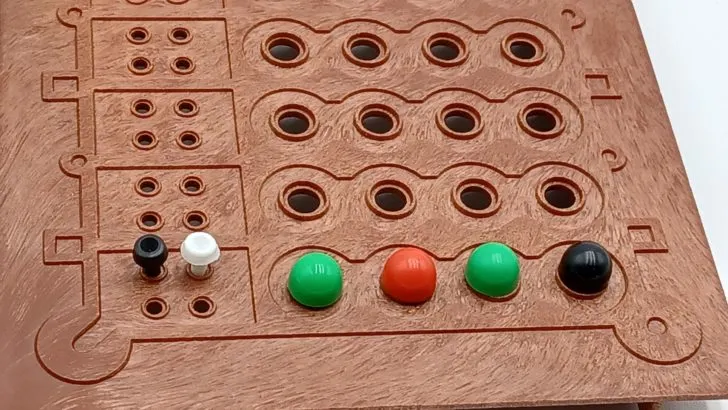
Mastermind Round Example
Here is an example of how the rest of the round from above could proceed.
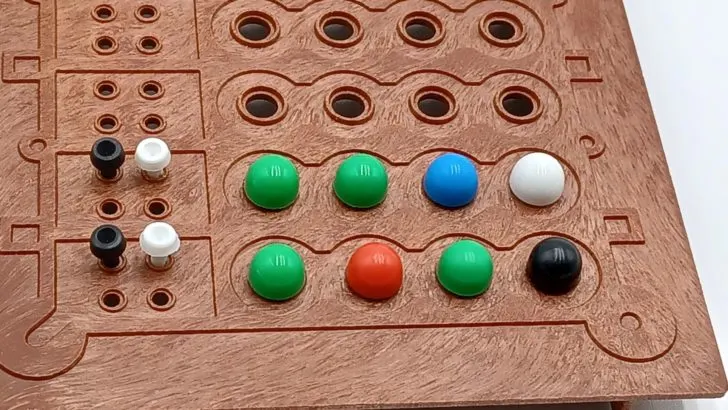
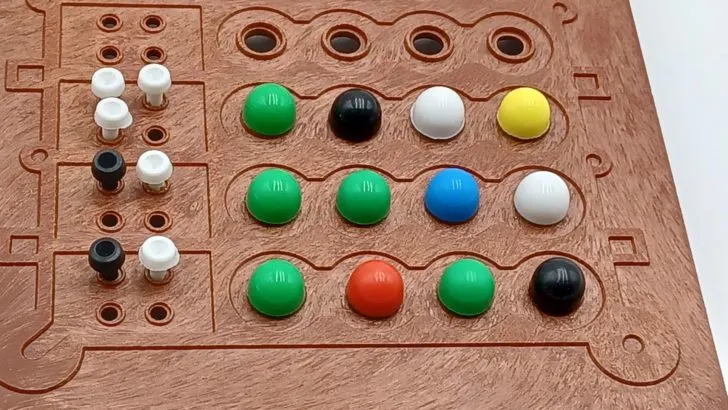
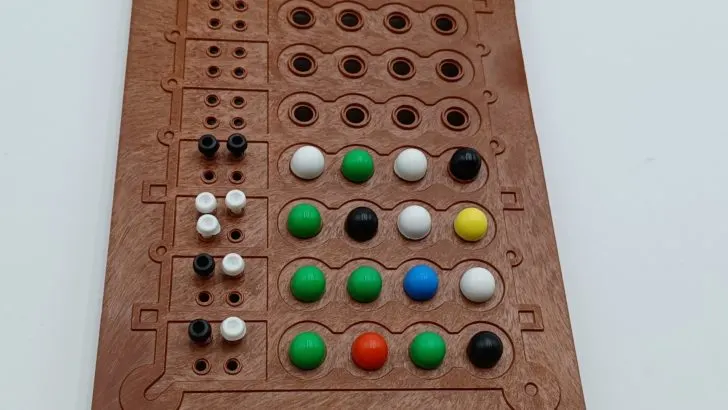
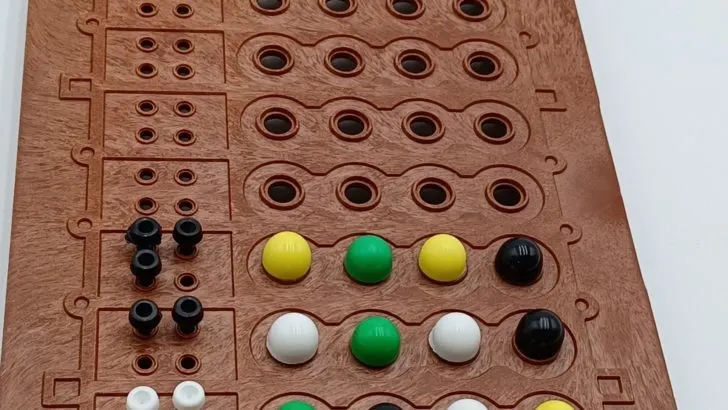
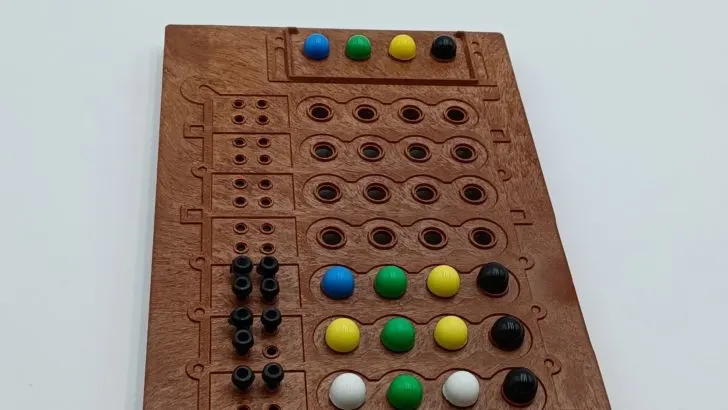
End of Round
The current round ends when the Codebreaker figures out the exact code (colors and placement) created by the Codemaker. Count up how many guesses/rows you needed to guess the code. This is your score for the round.
The two players will now change roles. Play the next round in the same way as the previous round.
Winning Mastermind
Mastermind ends when the agreed upon number of rounds are played.
The players compare their scores (number of guesses needed to solve the code). The player that received the lowest score in a round wins the game.
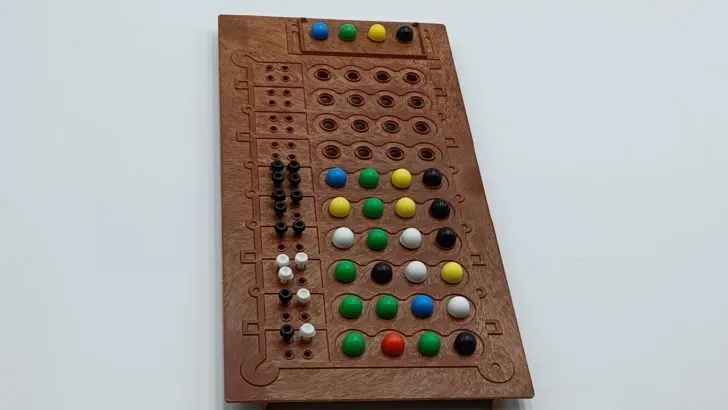
Advanced Mastermind
To make the game more complicated, you can choose to play the advanced version of Mastermind.
You will play the game in the same way as the normal game except you can leave Code Peg holes empty in both the final code and in the Codebreaker’s guesses. Leaving a hole empty acts like a seventh color of Code Peg.
If the Codemaker uses an empty space in the code, the Codebreaker has to figure out what space it is and also leave that space empty.
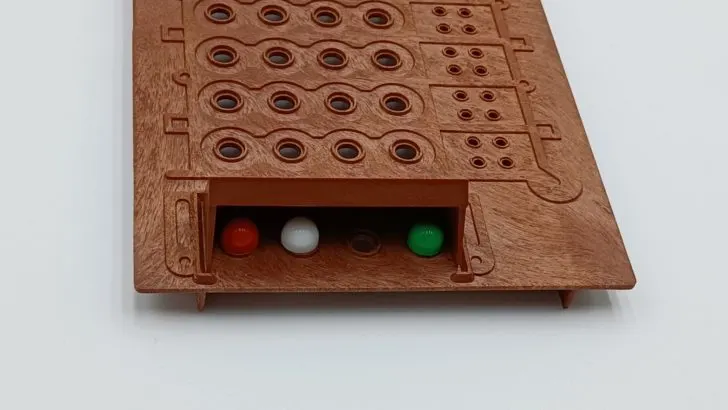
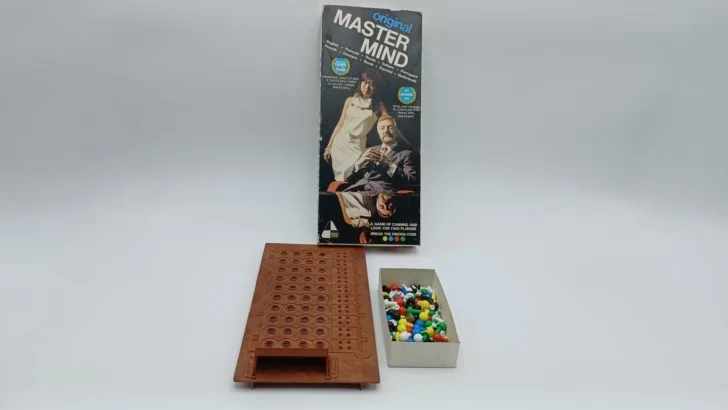
Year: 1971 | Publisher: Hasbro, Invicta Games, Parker Brothers, Pressman Toy Corporation, Waddingtons | Designer: Mordecai Meirowitz | Artist: NA
Genres: Abstract, Deduction, Two Player
Ages: 8+ | Number of Players: 2 | Length of Game: 20 minutes
Difficulty: Light | Strategy: Light-Moderate | Luck: Light
Components: Approximately 72 Code Pegs in six colors, Approximately 30 Key Pegs in two colors, gameboard and shield, instructions
Where to Purchase: Amazon, eBay Any purchases made through these links (including other products) help keep Geeky Hobbies running. Thank you for your support.
For more board and card game how to plays/rules and reviews, check out our complete alphabetical list of board game posts.

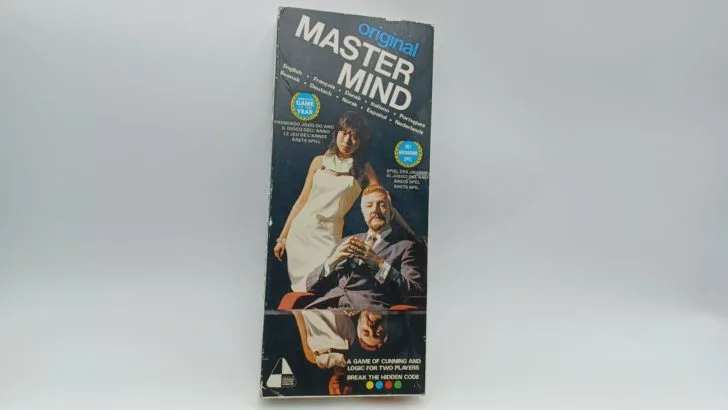
Mastermind Strategy: How to Always Solve the Hidden Secret Code - Geeky Hobbies
Saturday 30th of September 2023
[…] more details on how to play the game, check out our Mastermind How to Play […]